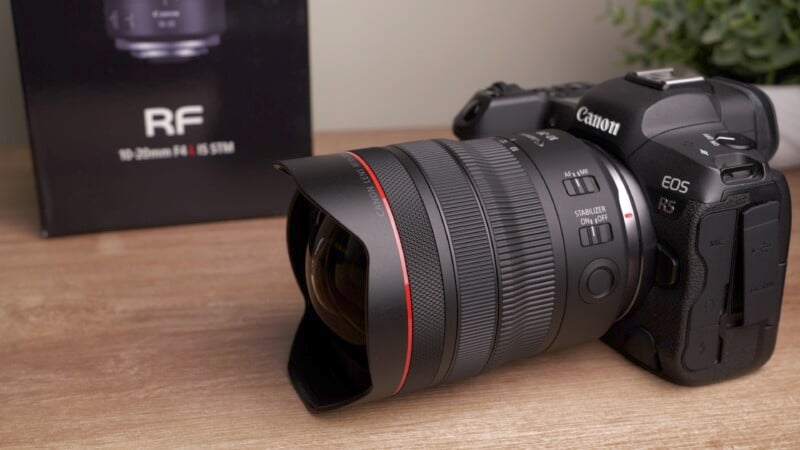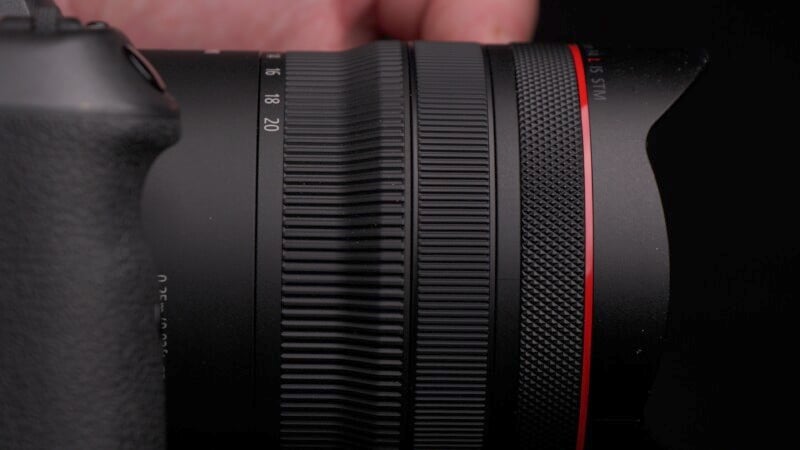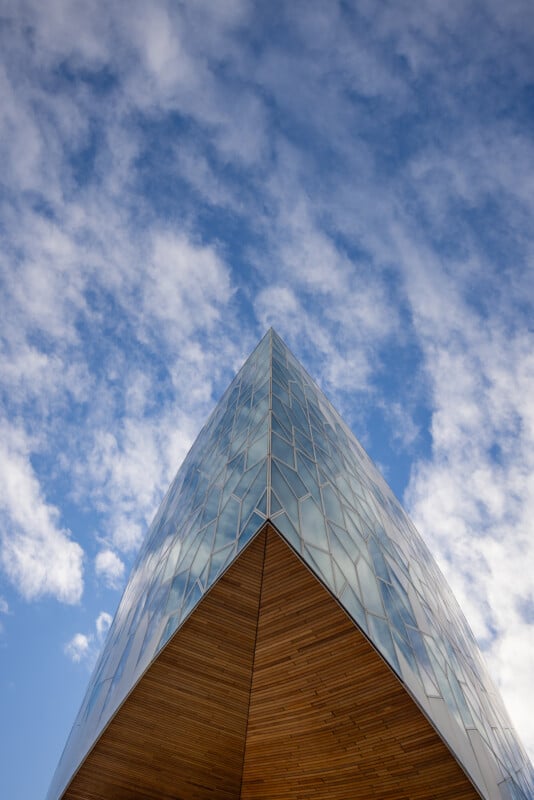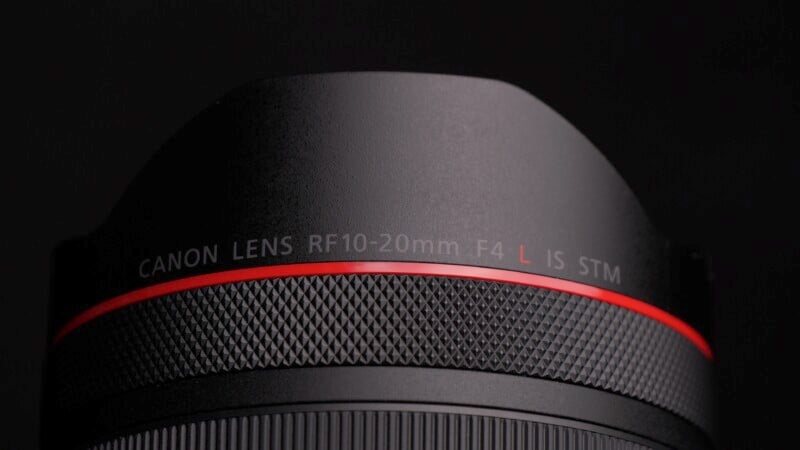The Canon EF 10-24 f/4 L lens was an extremely wide-angle lens that found popularity with DSLR users. Although it could easily be adapted to RF mirrorless cameras, doing so would make its bulky size more cumbersome and it was quite expensive — but now there is an RF solution.

As the world’s first autofocusing rectilinear zoom lens with 10mm coverage, the new $2,299 Canon RF 10-20mm f/4 L promises to deliver the same great image quality and extreme wide-angle coverage in a much smaller and more usable package.
Canon RF 10-20mm f/4 L: How It Handles
Weighing only 20 ounces (570 grams) the 10-20mm certainly keeps the package small. Despite being fully weather-sealed and ruggedly constructed, the 10-20mm is portable and takes up minimal space in the bag. There is no skimping on features, however, with a customizable control ring at the front of the lens followed by a well-damped manual focus ring that turns very smoothly.

Even more impressive is the addition of an optical image stabilization unit in the lens which promises up to six stops of control with an IBIS-equipped Canon body. The integrated hood denies the addition of front-mounted filter threads, but a rear-element filter is incorporated into the lens. There is also a customizable button on the side of the lens.

The Canon 10-20mm uses a more traditional stepping motor (STM) but it is absolutely silent and I found the focusing speed to be plenty fast, especially for a lens that provides tons of depth-of-field naturally. Overall, I have no issues at all with how the lens is built or how it operates in the field. The size and lightweight suggest a more affordable lens, but the features and build quality are L series all the way.

Canon RF 10-20mm f/4 L: The Image Quality Results
One of the key uses for such a lens will be cityscapes and landscapes. Both are situations where bright light sources can be present in the frame. In fact, with such a wide-angle lens sometimes it’s hard not to keep the sun out of frame.

Luckily, the 10-20mm handles flare quite well. The contrast remains crisp even when the sun is shining into the lens. There is some ghosting present and it becomes more obvious when stopping the lens down. The ghosting is pleasant in a way but I could see some situations where it becomes distracting so use your aperture accordingly.

Any landscape lens should at least have usable sun stars and Canon has a history of providing dramatic-looking ones. The Canon 10-20mm lens certainly maintains that tradition with some great sun stars. The points are long and fairly well-defined, so feel free to shoot nighttime cityscapes and Christmas tree lights all day long.

The transitions from in-focus to out-of-focus areas are fairly pleasing, although to be fair, this is a lens that often gets everything in focus regardless. Shallow depth-of-field is not this lens’ forte, but I found specular highlights to be free of any onion rings or hard outlines so the characteristic of the bokeh is smooth and simple. You can tell that Canon put a lot of effort into optimizing the optical design of an otherwise challenging lens formula.

Sharpness is very indicative of an L-series lens. Wide open aperture performance is equally sharp in the center of the image regardless of focal length. The sharpness extends well into the corners and stopping down the lens improves the overall detail only slightly.
I was concerned that corner sharpness would suffer on such a wide lens but I think users will be pleasantly surprised at how consistent it is across the whole frame. Landscape photographers wanting to make the most of the R5 and its 45-megapixel sensor will like this lens for its ability to make large prints possible.

Canon RF 10-20mm f/4 L: The Ultra-Wide Range is Covered
The Canon 10-20mm f/4 L has the RF ultra-wide range covered well. Although the lens is pricey, you are certainly getting professional results for your money. This is also a better option than adapting existing glass because of the huge savings in weight and size — something that mirrorless optical formulas are supposed to deliver.
Not everyone needs a lens this wide but it’s nice to see that Canon has provided a solution that doesn’t compromise on image quality.
Alternatives:
There isn’t anything like this lens in the RF mount that has autofocus. This is largely thanks in part to Canon and its unwillingness to support third-party lenses. You can adapt the SLR-based 10-24mm f/4 L lens but this is a much more well-suited optic for Canon mirrorless cameras.
Should You Buy It?
Yes — if you need this focal range. For that, lens is really the best option out there. In fact, it’s almost the only option out there.
